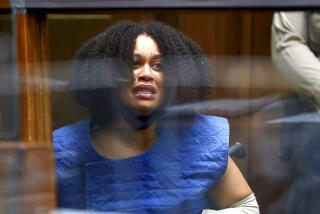‘Real Lucky,’ Says One of Trauma Center’s ‘Super-Saves’
- Share via
In the five years since trauma centers were established in Orange County, stories about patients dying unnecessarily in emergency rooms have been replaced by tales of against-the-odds survivals, of “super-saves”--like Nona Wolverton.
Wolverton, 26, advertising sales manager for a Mission Viejo bicycling magazine, was driving to her office after a morning appointment on Aug. 26 when a driver on the San Diego Freeway clipped her rear fender.
Wolverton’s Volkswagen Beetle went into a spin and slammed into the center divider, throwing her from the car onto the other side of the freeway. She landed under the wheels of a car driven by John Dean, at one time a counsel for former President Richard Nixon, and was dragged along 50 feet of asphalt.
Unconscious upon her arrival at Fountain Valley Regional Hospital’s trauma room, doctors determined that Wolverton had a massively fractured pelvis, extensive rib fractures and underlying lung damage. The team immediately brought her breathing under control by inserting a tube and placing her on a mechanical ventilator; simultaneously, blood transfusions were begun.
Next, trauma surgeon Robert Fayer inserted a tube into Wolverton’s abdominal cavity to look for internal bleeding. Finding none, and with Wolverton’s vital signs stabilized, Fayer began further tests for head and cervical spine injuries.
But during the tests, Wolverton’s blood pressure plummeted and her pupils dilated, a sign that too little blood was reaching her brain. She was seconds from cardiac arrest.
Doctors rushed her to an operating room, where the left side of her chest was sliced open and new units of blood quickly pumped in.
Simultaneously, a monitor was inserted under Wolverton’s skull to record brain pressures. With Wolverton’s signs stabilized again, her chest incision was closed and she was sent to the intensive care unit, still unconscious.
Today, although still bedridden, Wolverton is cheerfully recovering from her injuries, her chest surgery and a recent skin graft to help heal an asphalt-burned leg.
She is learning to walk, longing to return to her job, patiently watching the hair on her shaved head grow back and worrying just a little about how her head-to-toe scars will look with next summer’s fashions.
Her comeback has not been easy. Having no memory of the crash--or even two days before it--the reality of her near-catastrophe did not sink in until Wolverton saw pictures of her demolished car. The twice-daily dressing change on her leg at one point was so painful that she would cry for an hour before and afterwards. Before the accident, Wolverton’s only exposure to trauma care had been reading an article about the long and demanding hours of a trauma surgeon. “It interested me,” she said, “but that’s all I thought about it.” Now she and her family are among the trauma center’s biggest boosters. “I know I was real lucky,” she said.
There is no doubt in surgeon Fayer’s mind that it required a trauma center--with a decisive and immediate team response, a ready operating suite, a well-stocked blood bank and the constant vigilance of the surgeons--plus the graces of “whatever powers played a part” to save Wolverton’s life.
“This is the kind of patient the trauma program is designed to save,” Fayer said. “Five years ago, she would not have survived.”
More to Read
Sign up for Essential California
The most important California stories and recommendations in your inbox every morning.
You may occasionally receive promotional content from the Los Angeles Times.













